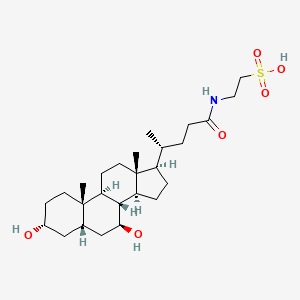|
|
|
|
pmid:12825132
|
|
|
|
|
pmid:12702047
|
|
|
|
|
pmid:27987324
|
|
|
|
|
pmid:27889204
|
|
|
|
|
pmid:27729186
|
|
|
|
|
pmid:27706903
|
|
|
|
|
pmid:27765486
|
|
|
|
|
pmid:27596970
|
|
|
|
|
pmid:27382986
|
|
|
|
|
pmid:27283502
|
|
|
|
|
pmid:25791922
|
|
|
|
|
pmid:25695629
|
|
|
|
|
pmid:25579883
|
|
|
|
|
pmid:25499542
|
|
|
|
|
pmid:25475860
|
|
|
|
|
pmid:25443293
|
|
|
|
|
pmid:25100709
|
|
|
|
|
pmid:21971157
|
|
|
|
|
pmid:21134703
|
|
|
|
|
pmid:16180656
|
|
|
|
|
pmid:12769806
|
|
|
|
|
pmid:27315604
|
|
|
|
|
pmid:16872555
|
|
|
|
|
pmid:28115375
|
|
|
|
|
pmid:
|
| Kim KS et al. |
Taurine may not alleviate hyperglycemia-mediated endoplasmic reticulum stress in human adipocytes. |
2013 |
Adv. Exp. Med. Biol. |
pmid:23392949
|
| Fu Y and Zhang T |
Pathophysilogical mechanism and treatment strategies for Leber congenital amaurosis. |
2014 |
Adv. Exp. Med. Biol. |
pmid:24664772
|
| Cai D and Liu T |
Inflammatory cause of metabolic syndrome via brain stress and NF-κB. |
2012 |
Aging (Albany NY) |
pmid:22328600
|
| Larghi A et al. |
Ursodeoxycholic and tauro-ursodeoxycholic acids for the treatment of primary biliary cirrhosis: a pilot crossover study. |
1997 |
Aliment. Pharmacol. Ther. |
pmid:9146783
|
| Rivard AL et al. |
Administration of tauroursodeoxycholic acid (TUDCA) reduces apoptosis following myocardial infarction in rat. |
2007 |
Am. J. Chin. Med. |
pmid:17436368
|
| Chen Y et al. |
Effect of taurine-conjugated ursodeoxycholic acid on endoplasmic reticulum stress and apoptosis induced by advanced glycation end products in cultured mouse podocytes. |
2008 |
Am. J. Nephrol. |
pmid:18648192
|
| Marzioni M et al. |
Ca2+-dependent cytoprotective effects of ursodeoxycholic and tauroursodeoxycholic acid on the biliary epithelium in a rat model of cholestasis and loss of bile ducts. |
2006 |
Am. J. Pathol. |
pmid:16436655
|
| Takeda N et al. |
Altered unfolded protein response is implicated in the age-related exacerbation of proteinuria-induced proximal tubular cell damage. |
2013 |
Am. J. Pathol. |
pmid:23871833
|
| Stravitz RT et al. |
Hepatocellular protein kinase C activation by bile acids: implications for regulation of cholesterol 7 alpha-hydroxylase. |
1996 |
Am. J. Physiol. |
pmid:8770045
|
| Alvaro D et al. |
Effect of ursodeoxycholic acid on intracellular pH regulation in isolated rat bile duct epithelial cells. |
1993 |
Am. J. Physiol. |
pmid:8238362
|
| Garcia-Marin JJ et al. |
Role of H+ transport in ursodeoxycholate-induced biliary HCO-3 secretion in the rat. |
1985 |
Am. J. Physiol. |
pmid:2994491
|
| Schroeder A et al. |
Substrate specificity of the rat liver Na(+)-bile salt cotransporter in Xenopus laevis oocytes and in CHO cells. |
1998 |
Am. J. Physiol. |
pmid:9486191
|
| Farges O et al. |
Permeability of the rat biliary tree to ursodeoxycholic acid. |
1989 |
Am. J. Physiol. |
pmid:2705526
|
| Zouboulis-Vafiadis I et al. |
Conjugation is rate limiting in hepatic transport of ursodeoxycholate in the rat. |
1982 |
Am. J. Physiol. |
pmid:7114264
|
| Kitani K et al. |
Tauroursodeoxycholate prevents biliary protein excretion induced by other bile salts in the rat. |
1985 |
Am. J. Physiol. |
pmid:2984943
|
| Bouscarel B et al. |
Changes in G protein expression account for impaired modulation of hepatic cAMP formation after BDL. |
1998 |
Am. J. Physiol. |
pmid:9696716
|
| Deroubaix X et al. |
Saturation of hepatic transport of taurocholate in rats in vivo. |
1991 |
Am. J. Physiol. |
pmid:1996639
|
| Eckhardt U et al. |
Polyspecific substrate uptake by the hepatic organic anion transporter Oatp1 in stably transfected CHO cells. |
1999 |
Am. J. Physiol. |
pmid:10198348
|
| Kitani K et al. |
Differing transport maxima values for taurine-conjugated bile salts in rats and hamsters. |
1986 |
Am. J. Physiol. |
pmid:3789151
|
| Malo A et al. |
Tauroursodeoxycholic acid reduces endoplasmic reticulum stress, trypsin activation, and acinar cell apoptosis while increasing secretion in rat pancreatic acini. |
2010 |
Am. J. Physiol. Gastrointest. Liver Physiol. |
pmid:20671193
|
| Monte MJ et al. |
Cytosol-nucleus traffic and colocalization with FXR of conjugated bile acids in rat hepatocytes. |
2008 |
Am. J. Physiol. Gastrointest. Liver Physiol. |
pmid:18467501
|
| Plösch T et al. |
Abcg5/Abcg8-independent pathways contribute to hepatobiliary cholesterol secretion in mice. |
2006 |
Am. J. Physiol. Gastrointest. Liver Physiol. |
pmid:16614371
|
| Mita S et al. |
Vectorial transport of bile salts across MDCK cells expressing both rat Na+-taurocholate cotransporting polypeptide and rat bile salt export pump. |
2005 |
Am. J. Physiol. Gastrointest. Liver Physiol. |
pmid:15297262
|
| Henkel AS et al. |
Reducing endoplasmic reticulum stress does not improve steatohepatitis in mice fed a methionine- and choline-deficient diet. |
2012 |
Am. J. Physiol. Gastrointest. Liver Physiol. |
pmid:22556147
|
| Bodewes FA et al. |
Ursodeoxycholate modulates bile flow and bile salt pool independently from the cystic fibrosis transmembrane regulator (Cftr) in mice. |
2012 |
Am. J. Physiol. Gastrointest. Liver Physiol. |
pmid:22301109
|
